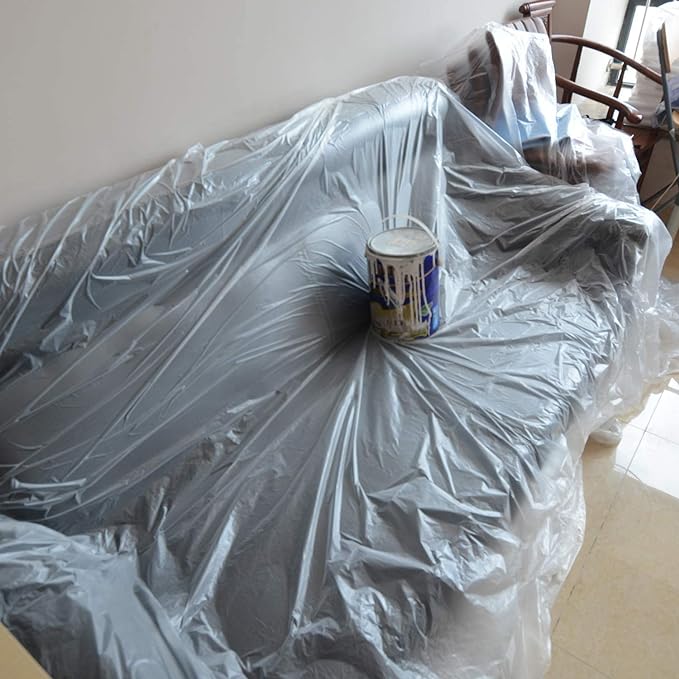Painter plastic, often underestimated but widely used, has a crucial role in the world of painting. This unassuming material can save your time, effort, and resources while ensuring your paint job is as smooth as possible. In this comprehensive guide, we’ll dive into the world of painter plastic, understanding its various applications, compatibility with different types of paint, and how to make the most of this versatile tool.
Painter Plastic: An Overview
1. What is Painter Plastic?
Painter plastic, also known as drop cloth or painter’s tarp, is a sheet of plastic typically used to protect surfaces and furniture during painting. It acts as a barrier, preventing paint from splattering, dripping, or seeping through to surfaces beneath.


2. Types of Painter Plastic:
There are various types of painter plastic, including lightweight plastic sheets, heavy-duty plastic tarps, and plastic masking films. The type you choose depends on your specific painting needs and the level of protection required.
3. Using Painter Plastic:
Painter plastic is versatile and can be employed in several ways:
• Furniture and Surface Protection: Covering furniture, floors, and objects not meant to be painted is the most common use of painter plastic. It offers excellent protection against paint spills and splatters.
• Painting Prep: You can use painter plastic to create a clean, contained workspace. By taping it to walls and floors, you can establish a designated area for your painting project.
• Outdoor Use: Painter plastic is not limited to indoor projects. It’s also suitable for protecting outdoor items like garden furniture and equipment from the elements or paint.


4. Compatibility with Different Paints:
• Acrylic Paint: Acrylic paint can adhere well to painter plastic. However, it’s important to note that it can be peeled off after drying. This makes it a good choice for temporary applications.
• Oil-Based Paints: Oil-based paints adhere effectively to painter plastic. They provide a durable finish and are less likely to peel.
• Latex Paint: Latex paint, being water-based, may not adhere as effectively to plastic. It can peel off if you are not done in proper manner. Using a plastic-specific primer can enhance adhesion.
5. Making Painter Plastic More Effective:
• Clean the Surface: Ensure that the surface to which the painter plastic will be applied is clean and dry. Any dust or dirt can affect adhesion.
• Apply Primer: When painting on plastic, using a plastic-specific primer can significantly improve the bond between the paint and the surface.
• Proper Taping: Secure the painter plastic by using masking tape specifically designed for this purpose. Apply the tape along the edges of the plastic, ensuring a tight seal.
• Quality of Plastic: Use the appropriate type of painter plastic based on the project. Heavy-duty plastic tarps are suitable for large projects and outdoor use, while lightweight plastic sheets are ideal for quick indoor touch-ups.
6. Safety Considerations:
Painter plastic is generally safe to use. However, make sure to handle paint and paint-related materials with care. Adequate ventilation is essential when working with any type of paint.
The Ultimate Question: Does It Work?
Painter plastic is an effective tool when used correctly. It protects your belongings and surfaces from paint splatters, drips, and spills, making your painting projects cleaner and more efficient. Its success depends on the type of paint you use, proper surface preparation, and quality painter plastic.
So, in answer to the question “Does it work?” – Yes, painter plastic does indeed work. It’s an indispensable tool for DIY enthusiasts, professional painters, and anyone who values a neat and hassle-free painting experience.
Conclusion
In the world of painting, the unsung hero is often painter plastic. Its ability to keep your space clean, your furniture free of paint splatters, and your project on track cannot be overstated. With the right type of plastic, proper adhesion, and some basic safety precautions, your painting endeavors are bound to be more enjoyable and successful.


